Diana Kupke Writes

Eleventh Archive
Items from 25 July to 6 November 2011
2 November to 6 November 2011
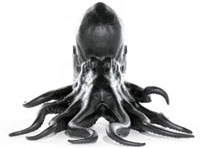
The wonderful octopus chair
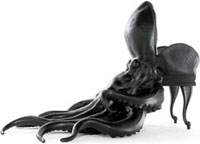

Women and children who have to flee from abusive homes can now take their much loved pets with them knowing they will be cared for by Pets in Crisis. Most refuges do not take animals but leaving them with a person who may take out their rage on the defenseless pets is not the answer, so six years ago RSPCA Queensland, CUA, and DVConnect combined to begin Pets in Crisis. This group provides immediate and temporary accommodation with trained and caring volunteers.
The Pets in Crisis Program (known as Safe Beds for Pets in NSW) is supported by CUA/RSPCA in Queensland, New South Wales and Victoria. Donations through the RSPCA are very happily accepted online.
Let's hear it for bamboo...
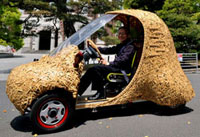
The Beijing International Design Triennial featured a section on bamboo which included everything from clothing to bicycles and of course, the above bamboo car. Bamboo, which is harvested sustainably, has natural antibiotic properties and is strong enough to be used for furniture, and of course for the structures outside newly built Chinese buildings.
Kyoto University developed the bamgoo car which is run by electricity and can reach 50 kilometres per hour. The body, made of hundreds of finely cut bamboo pieces, is soft and crumples if the car is involved in a collision.
And below is the bamboo office which features the same natural material. Bamboo is used for lattices and columns and other recycled materials used in the office were fly ash, wood, stone, scrap metal and debris for aggregate. Manasaram Architects, in Bangalore, developed the building which encircles a pond which harvests run off storm water.
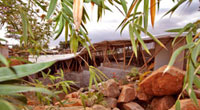
1 November 2011
What animals are beaten in public - and the public cheers? What beautiful animals are whipped in order that wealthy people may add to their wealth and poor people can become poorer? Thoroughbred racing is a disgrace.
25 October to 31 October 2011
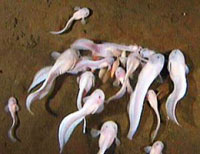
A few years ago cameras were lowered five miles down into the depths of the Pacific Ocean to discover very active snailfish. Prior to this expedition scientists expected fishes in the deep would be 'motionless, solitary, fragile individuals' but instead they found highly social active groups living in the extreme environment.
The snailfish, who moved so quickly, may face a name change. No doubt they move quickly because of the close to freezing temperatures yet how they do it is astounding as the water pressure is the equivalent of 1600 elephants standing on the roof of a small car. Now that's a fascinating image.
The expedition was part of Oceanlab's HADEEP project which is a collaborative research program with the University of Tokyo. The intention was to investigate life in the hadal region of the ocean, which is anything from 6000 metres and below.
I think that I shall never see a poem lovely as a tree
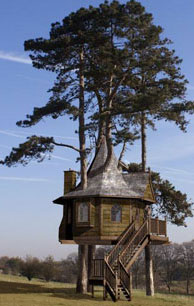
Or a house as lovely as a tree house
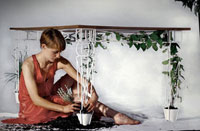
You need to water this table. Designers, Jamie Elliott and Liam Healy of JAILmake plan to reintroduce nature to the kitchen, a place where food is not merely kept in cupboards, but grown up the legs of the table. They tested a variety of herbs, tomatoes and sweet peas prior to displaying the article at the London Design Week 2011. I have failed to discover why their creative partnership is called JAILmake. They do not operate out of a jail but out of a studio in south east London.
18 October to 24 October 2011
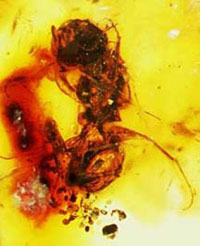
It is a bee, embedded in amber, but not just any bee, it is believed to be 100 million years old.
The find was made at a mine in northern Myanmar. The belief that bees appeared some 120 million years ago has gone unproven until now as until recently the oldest fossil record dated back 65 million years. The bee, above, is close to proving a theory long held by scientists that bees could have originated 120 million years ago. Researchers now believe bees originate from Melittidae which come from Africa.
Mitey Maids
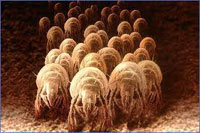
Mites act as live-in maids for tropical sweat bees and clean up fungi which can cause problems for the health of the bees and their young. These are the same type of mites who live in the dust beneath beds and in carpets.
It has long been known that relationships exist for shrimps and small fish which clean up parasites on larger fish, but such a relationship had not been seen on dry earth. Rotten wood is tunnelled out by bees in the genus Megalopta to provide a home for their young who are fed with nectar and pollen. Researchers in Panama (a man, a plan, a canal, Panama!) discovered that young bees were much healthier in homes where mites lived. When mites were removed from nests the areas became dirty and fungus counts rose. The bees have healthier broods while the mites have a home, fungus for finger food, and rides to new nests.
Stampy persists
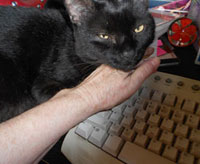
When Stampy decides I am running late with her food, she jumps on whichever desk I am using and rests her great head on my keyboard which can cause many problems. The only way I can work is to use the back of my hand to provide her with a headrest which also protects the keys from being pressed down when I don't want them to.
11 October to 17 October 2011
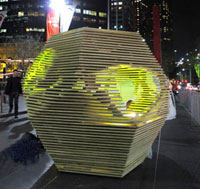
The Origami house, designed by Lava, which is based in Sydney, is an idea for an emergency shelter to be used during natural disasters.
The geometric appearance, derived from a water molecule, is designed to be stackable, and can comfortably house two adults and one child. Interior ledges can be used as chairs or beds. The house can be flat packed and assembled where required after being dropped onsite by a helicopter.
Below, don't be led astray by this shoe
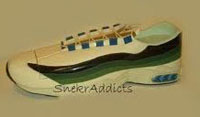
It is a coffin, no doubt designed for a speedy exit.
Patient Subsidy
A new Queensland study has found that rectal cancer patients, who lived more than 100 kilometres from a source of radiotherapy, were 16 percent more likely to die than patients who lived within 50 kilometres of radiotherapy. And the figure increased with the distance; for a patient who lived between 200 and 399 kilometres, the percentage was 30 percent.
The study calls for significant increases in the patient travel subsidy. In Mackay we often have the situation where frail aged patients are forced to drive four hundred kilometres to Townsville putting not only themselves, but also others at risk. This disgraceful situation has been the norm for all the thirty years I have lived in this district.
Mirrorwiper

Forget using your towel to clear your bathroom mirror, instead rush out and buy a Mirrorwiper which comes to us from Dewa Bleisinger. The device, which works on surfaces that are larger than 40 cm by 40 cm, is rotated like a windshield wiper. Installation is simple, just press the suction cup onto the top of your mirror.
Snoopy resting
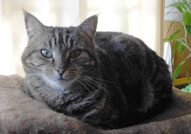
26 September to 10 October 2011

Young performers, didgeridoo player, Chris Seden, (left), and dancer, Andrew Pannowitz,(far right), seen here with facilitator Clinton Schultz, delighted the attendees at the recent Forming Culturally Responsive Practice workshops.
Closing the Gap coordinator, Natalie, is seen below with performer Ringo.

From the printing press to the online library
Forty years ago the operators of the Xerox Sigma V mainframe at the Materials Research Laboratory at the University of Illinois gave one hundred million dollars worth of computer time to Michael Stern Hart who began Project Gutenberg as a way of storing, retrieving, searching and reading of material stored in computer libraries.
From December 1971 to December 1993 one hundred ebooks were produced including Shakespeare and the Bible which were keyed in by hand and then proof read.
Computer scanners have greatly speeded up the process and there are now nearly twenty thousand ebooks available in the Project Gutenberg library. Each year, as copyright runs out, more new works become available.
Volunteers are the backbone of this project. They produce ebooks, proof read them, post them to the internet site and to mirror sites around the world, and also maintain the computer hardware and software involved in the project which is named after the inventor of the printing press, Johann Gutenberg.
Enjoy yourselves on the Project Gutenberg Australia site.
Is it a spaceship?

No, it is an entry for the design of the Busan Opera House to be built in Busan, South Korea. Lacoste + Stevenson Architects, together with ARUP Sydney, maximised the surrounding parkland to make the structure able to be used for outdoor events as well as for indoor happenings. The design is an interpretation of a Korean stone art form, suseok.
13 September to 25 September 2011

The amazing doughnut shape is a new media centre which has been under construction in Beijing, China for the past two years.
The mobius strip was the impetus for the design whose steel ribs have a secondary importance as water channels which send rainwater to a collection tank which is then used on the surrounding water features and landscape. A double skin facade will reduce energy consumption and will maintain comfortable temperatures inside the building in both winter and summer.
The Phoenix International Media Center was designed by Shao Weiping and construction is due to be completed during 2012. It includes media offices and broadcasting studios for the client, Pheonix Satellite Television, plus restaurants and a parking garage.
Parasite farm in your kitchen

The photograph above, by Alexander Giesemann, shows a kitchen with a fully functioning parasite farm.
On the right is a chopping board and vegetable waste is simply scraped over the edge into the green plastic item which is a vermicompost container which (after time) produces humus soil. The soil is then put into the illuminated plant boxes (on the shelving on the left) where vegetables and herbs can be grown right in the heart of your kitchen.
The parasite farm comes from Charlotte Dieckmann and Nils Ferber.
Queenie relaxes for a change
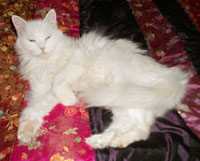
5 September to 12 September 2011
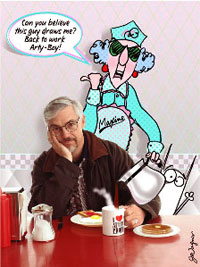
Just about everyone enjoys the Maxine cartoons which appear sporadically via email, they are the ones which feature a woman of a certain age, wearing sunglasses, whose ascerbic comments put the problems of life right into perspective - her perspective.
I had always envisaged the cartoonist as a female with a strong women's liberation background, and perhaps with a touch of hippy and flower in the hair upbringing. No! The creator is a male, John Wagner, who created Maxine in the olden days (1986), as a character for a line of greeting cards.
I knew Maxine was popular but I didn't know more than 220 million Maxine cards have been sold, and that Maxine even has a fan club with 17,000 members.
John Wagner, who has been a Hallmark artist since 1970, used his mother, maiden aunts and his grandmother as the model for Maxine. I wonder if they have forgiven him yet, or are they basking in the secondhand limelight?
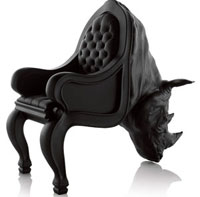
I have featured a good number of chairs in the column (which makes it a chairful column) but most of them, while being fascinating, do not encourage one to sit and relax. The chair above looks wonderfully comfortable and, as the next photograph shows, it is also a wonderful creation.
Spanish designer, Maximo Riera, is responsible for the rhino chair which is on show at the 100% Design London exhibition from September 22 to 25.
Go green - have your body liquefied
If you don't believe in burial and if you are cold toward the idea of cremation, there is a new way to dispose of your body. A funeral home in Florida now offers a green alternative through its alkaline hydrolysis unit where the body is dissolved. Before the unit could be put to use the process had to be legalised by state legislature in Florida.
The Glasgow makers of the unit claims the process produces a third less greenhouse gas than cremation, uses a seventh of the energy, and allows for the complete separation of dental amalgam for safe disposal. Apparently up to 16 percent of airborn mercury emissions in the UK is due to amalgam which is vaporised in crematoria. Newly designed mercury filtration systems are now being installed.
The body is submerged in a solution of water and potassium hydroxide which is then pressurised to 10 atmospheres and heated to 180 degrees centigrade for between two-and-a-half to three hours. Voila! The body is dissolved and the resulting liquid (which is sterile and which poses no environmental risk) goes into the municipal water system.
A cremulator is used to crush the bones which are left in the unit and all implants, artificial joints and metals are removed.
The new process, known as resomation, is also being considered by Belgium undertakers. Cremation of each body is an environmental concern as 573 pounds of carbon dioxide are released with each burning.
Only bones are left
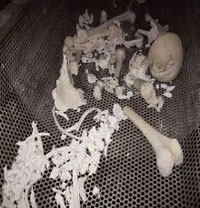
27 August to 3 September 2011

Dementia figures are frightening. There are currently 269,000 Australians living with dementia and the number of people with dementia is set to increase by almost 50% during the next 10 years. By 2050 there will be almost one million Australian people with dementia.
In spite of the clear rise in the numbers of people with dementia the 2011 Federal Budget provided no additional funding. And to make the situation worse, the Australian government terminated the Dementia Initiative which meant the loss of guaranteed funding for essential programs and support services for people living with dementia.
In an attempt to bring government attention upon the problem there will be a Fight Dementia March on October 13 in Canberra at Parliament House.
Cure for emphysema
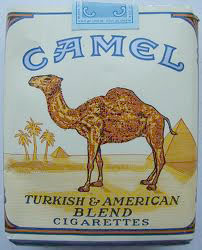
Not sure if I have used this information before, it seems familiar, but then it probably stuck in my mind because it is rather odd. And the latest cure for emphysema is - cigarette smoke. More than 60,000 people have been treated at a clinic in Jakarta, Indonesia during the past ten years. Chemist Gretha Zahar, modifies the tobacco smoke with what is described as nanotechnology to remove free radicals and to adjust the mercury levels. Gretha Zahar says her divine cigarettes cure all diseases. Note, 400,000 Indonesians die every year from smoking related causes.
Scary stuff
The world is indeed a frightening place. An Israeli couple enjoys Facebook to such an extent they have named their third child Like, in honour of a button on the social networking site that allows users to express their approval of someone else's online actions.
Lior and Vardit Adler said they liked giving their children uncommon names. Their other two (poor) children are called Pie, and Dvash, which means honey in Hebrew.
The couple said in olden times biblical names had been the way to go as the bible was an icon but these days Facebook is the most famous icon in the world and so it made sense to name their (poor) child after a button.
23 August to 26 August 2011
Introducing MedRN

Mackay consultant pharmacist, Joyce McSwan, has produced a series of four dvds which provide RCNA endorsed medication training for nurses in chronic pain management. Joyce, who is familiar with most of the local nursing homes, and who has been involved with the recent three year long Mackay Palliative Care project, is passionate about pain.
She said more than 20 percent of people over 65 years of age reported persistent pain with the rates of pain in residential aged care facilities being from 50 to 80 percent.
Joyce, who is the founder of MedRN (Medication Education for Nurses) is at the forefront of medication education in our area. She has a great deal of experience which includes provided inservice education at RACFs, online training for nurses, and clinical consulting in all aspects of medication use.
Peanut worm larvae
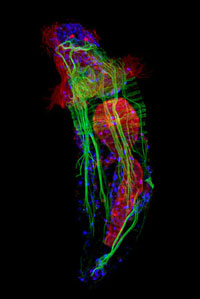
This image is of the beautiful peanut worm larvae which drifts about until it becomes an adult and then settles down on the ocean floor. The larva above is three days old and the green shows muscles, blue reveals nuclei and the digestive system is red. Otherwise known as Nephasoma pellucidum the peanut larva was first named by Keerstein in 1865. It is mainly found in the western central Atlantic and in the Indo-Pacific waters.
17 August to 22 August 2011
through the night for Tiwest
The Tiwest Night Stalk, which runs from 1 September until 16 October, will involve hundreds of people, all over Australia, taking to the night with torches, and making a note of all the native and feral wildlife they see. Simply go off into the night, record all the frogs, reptiles, mammals, birds and bats that cross your path and send your spotter's log to Perth Zoo.
The surveys are designed to collect information about animal numbers and their distribution which will be collated into a nationwide database that can be accessed by individuals, community group, schools, and conservation agencies.
A different kind of PR
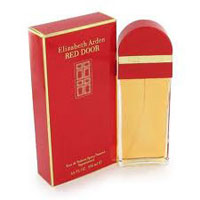
In the world of scent the initials PR don't stand for public relations but for perfumery radar, an electronic item which classifies odors that make up perfume.
Until now a series of arbitrary words, such as citrus, floral, and oriental, have been used to classify scents but Portugese researcher, Alirio Rodrigues, from the University of Porto, and his colleagues have developed the PR which takes the personal out of describing perfumes. I have often asked strange women what perfume they are wearing and the answer often comes back as Red Door, a perfume to which I am allergic, but which I am very attracted to.
While the human nose has 5 million olfactory receptors, dogs have more than 220 million and the portion of the dog's brain which analyses smells is 40 times larger than that of humans.
Glowing
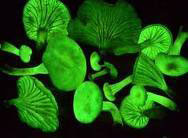
A forgotten mushroom was lost and now is found! In 1840 George Gardner, an English botanist saw boys playing in a street in Brazil with a bright glowing object which turned out to be a luminescent mushroom. The mushroom was sent to Kew where it was called Agaricus gardneri.
169 years pass and researchers from San Francisco State University rediscover the mushroom which is renamed as Neonothopanus gardneri. This bioluminescent fungi is so bright the light can be used to read by. Begone bedside lamp! Welcome Neonothopanus gardneri.
Capturing the mushroom meant the researchers went into the Brazilian jungle on nights of the new moon and, evading poisonous snakes and jaguars, and bumping into trees, finally found their prey.
Jellyfish and fireflies are the best known bioluminescent organisms, however the ability is also known in some bacteria, insects and fish. Researchers believe that the fungi make light in the same way that a firefly does, through a chemical mix of a luciferin compound and a luciferase. Luciferase is an enzyme that aids the interaction among luciferin, oxygen and water to produce a new compound that emits light.
7 August to 16 August 2011

If only ten percent of a population holds an unshakable belief, that belief will always be adopted by the majority of the society. Scientists at Rensselaer Polytechnic Institute (SCNARC) used computational and analytical methods to discover the tipping point where a minority belief becomes the majority opinion.
The finding has implications for the study and influence of societal interactions ranging from the spread of innovations to the movement of political ideals. SCNARC Director Boleslaw Szymanski said once the number grew above ten percent, the idea spread very quickly. He said events in Tunisia and Egypt, where dictators had been in power for decades, showed this tipping point when they were overthrown in a very short space of time.
The findings showed that the percentage of committed opinion holders required to influence a society remained at approximately ten percent, regardless of how or where that opinion started.
New invention would do away
with bulky medical equipment

A tiny wireless patch, which adheres to the skin, is being studied as a new way to monitor the vital signs of people who are ill. Electronic sensors, which are embedded in a film thinner than the diameter of a human hair, are then placed on a polyester backing like those used for the temporary tattoos popular with children. The sensors move with the skin and adhere without the use of adhesives.
These patches would eliminate the bulky wiring and electrodes used in current monitors and would be far more comfortable for patients. It is believed the patches could remain in place for up to two weeks.
The patches would be able to monitor brain waves, muscle movement, check the larynx, and emit heat to heal wounds.
Hello Big Brother
Wal-Mart, the chain store in the USA where people with absolutely no fashion sense shop, is now putting Radio Frequency Identification tracking tags on clothing. While this step is being undertaken theoretically to enable better control of their inventory, the tags cannot be turned off and they are trackable.
The tags can easily be removed from the clothing but consumers need to be aware they should be thrown far away from the buyer and their home. Privacy advocates suggest unscrupulous marketers or criminals could drive by consumers' homes and scan their garbage to discover what they have recently bought.
Wal-Mart has 3750 stores which translates into a great many customers. Inventory control is obviously very important and the smart tags mean staff can wave a wand in the store and know exactly what products are available.
The RFID tags store unique numerical identification codes that can be scanned from a distance, which can track pallets of merchandise traveling through the supply chains. A further worry is that several states in the USA provided enhanced driver's licences that contain radio- frequency tags with unique ID numbers. The question is whether retailers can scan customers who carry such licences and be able to recognise them on follow-up visits to the shops.
In Europe some stores use removable smart tags which are removed at checkout. Inventory is controlled but the item is no longer tracked after that point.
Wal-Mart women would..
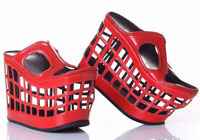
..love these shoes.
1 August to 6 August 2011
It is scary to read about Dr Scott Reuben who has admitted his guilt to faking countless articles which were published in mainstream peer-revied medical journals. After receiving a $75,000 grant from Pfizer, to study Celebrex, he published research which proved the drug helped to reduce pain in patients following surgery, unfortunately no patients were ever enrolled in the study. Wall Street Journal reports he also faked study data on other drugs including Vioxx and Bextra.
Dr Reuben, whose title is questionable, received a total of $420,000 from major drug companies. One journal, Anesthesia and Analgesia, was forced to retract ten papers which were authored by Dr Reuben. His falsified research provided drug companies with excellent quotes for their advertising campaigns during a period of 13 years. The buzz phrase, 'evidence-based medicine', should be used with discretion.
Little boxes
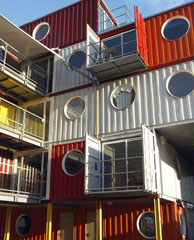
Containers, which are normally used to store and transport a variety of goods, are also being touted as ideal for humans. Containers, now seen as an alternative method of construction, are being used as youth centres, classrooms, office space, studios for artists, nurseries and shops. They are structurally strong, easily available and can be quickly bolted together to form larger spaces.
Littler boxes

A variety of coffins which takes art to a dead end.
25 July to 31 July 2011
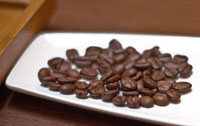
This coffee costs between US$120 and $300 per pound and can be found in Sumatra, Java and Sulawesi. Sounds wonderful but the Kopi Luwak, the rarest coffee in the world, is made from the excrement of the Luwak, which is a cat like creature found in Indonesia. These animals eat the very ripe coffee fruit but the beans, which can't be digested, come out whole in the aforesaid excrement. While inside the animals the beans are fermented by the stomach acids and enzymes which give the coffee a fascinating aroma. My question is - who on earth decided excreted beans in cat poo would make marvellous coffee?
And the answer is that between 1830 and 1870 the Dutch refused to allow native farmers to pick coffee fruit for their own use. Because they wanted to drink coffee they discovered that the luwak, (the Asian Palm Civet or Paradoxus hermaphroditus) ate the fruit of the coffee tree and the beans were left in the droppings.

Nick, Denese and Lakeda visited Port Douglas recently and are seen here with Peggy relaxing on the patio
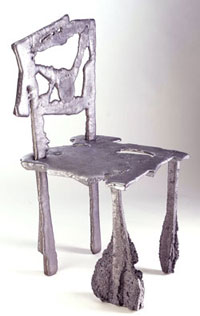
It is a very good thing they didn't have to sit on the chair above which would appear to be the most uncomfortable I have ever seen. Israeli designer, Ronen Kadushin, experimented by putting pieces of wood into a sandbox. He sent molten aluminium into the spaces they left which produced this chair which is made in two parts, one part is the back and the rear legs, the other part is the seat and front legs which display the fascinating bulges caused by sand sponging in. This chair is luckily one of a kind.

This residential tower, from architect Edouard Francois, in Nantes, is layered with thin metal tubes which hold plants grown by the local botanical garden. The containers are used to "recreate the natural conditions of the chasmophyte vegetation". And looking that up it occurs on limestone rocks where they survive by growing strong roots which not only support the plants on the cliffs but allows a maximum exploitation of the water and nutrients found in the scanty soil. The 17 storey tower, with its elliptical balconies, provides 90 units plus office and recreation space and 91 parking spaces.
12th archive 10th archive